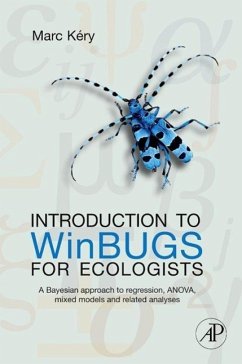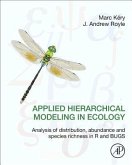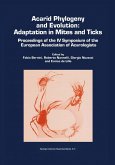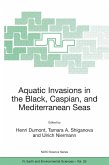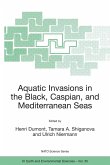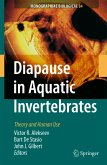Bayesian statistics has exploded into biology and its sub-disciplines, such as ecology, over the past decade. The free software program WinBUGS and its open-source sister OpenBugs is currently the only flexible and general-purpose program available with which the average ecologist can conduct standard and non-standard Bayesian statistics. Introduction to WINBUGS for Ecologists goes right to the heart of the matter by providing ecologists with a comprehensive, yet concise, guide to applying WinBUGS to the types of models that they use most often: linear (LM), generalized linear (GLM), linear mixed (LMM) and generalized linear mixed models (GLMM). Introduction to WinBUGS for Ecologists combines the use of simulated data sets "paired" analyses using WinBUGS (in a Bayesian framework for analysis) and in R (in a frequentist mode of inference) and uses a very detailed step-by-step tutorial presentation style that really lets the reader repeat every step of the application of a given mode in their own research.
Introduction to WinBUGS for Ecologists introduces applied Bayesian modeling to ecologists using the highly acclaimed, free WinBUGS software. It offers an understanding of statistical models as abstract representations of the various processes that give rise to a data set. Such an understanding is basic to the development of inference models tailored to specific sampling and ecological scenarios. The book begins by presenting the advantages of a Bayesian approach to statistics and introducing the WinBUGS software. It reviews the four most common statistical distributions: the normal, the uniform, the binomial, and the Poisson. It describes the two different kinds of analysis of variance (ANOVA): one-way and two- or multiway. It looks at the general linear model, or ANCOVA, in R and WinBUGS. It introduces generalized linear model (GLM), i.e., the extension of the normal linear model to allow error distributions other than the normal. The GLM is then extended contain additional sources of random variation to become a generalized linear mixed model (GLMM) for a Poisson example and for a binomial example. The final two chapters showcase two fairly novel and nonstandard versions of a GLMM. The first is the site-occupancy model for species distributions; the second is the binomial (or N-) mixture model for estimation and modeling of abundance.
Hinweis: Dieser Artikel kann nur an eine deutsche Lieferadresse ausgeliefert werden.
Introduction to WinBUGS for Ecologists introduces applied Bayesian modeling to ecologists using the highly acclaimed, free WinBUGS software. It offers an understanding of statistical models as abstract representations of the various processes that give rise to a data set. Such an understanding is basic to the development of inference models tailored to specific sampling and ecological scenarios. The book begins by presenting the advantages of a Bayesian approach to statistics and introducing the WinBUGS software. It reviews the four most common statistical distributions: the normal, the uniform, the binomial, and the Poisson. It describes the two different kinds of analysis of variance (ANOVA): one-way and two- or multiway. It looks at the general linear model, or ANCOVA, in R and WinBUGS. It introduces generalized linear model (GLM), i.e., the extension of the normal linear model to allow error distributions other than the normal. The GLM is then extended contain additional sources of random variation to become a generalized linear mixed model (GLMM) for a Poisson example and for a binomial example. The final two chapters showcase two fairly novel and nonstandard versions of a GLMM. The first is the site-occupancy model for species distributions; the second is the binomial (or N-) mixture model for estimation and modeling of abundance.
Hinweis: Dieser Artikel kann nur an eine deutsche Lieferadresse ausgeliefert werden.
"I don't believe this book was written with the goal of being treated as the primary text of an intro Bayesian statistics course. That said, it could prove to be a useful supplemental text for an introductory Bayesian course or even a linear models course. Although the book was geared towards ecologists, I believe it would be an excellent library addition for any applied modeler interested in applying Bayesian methodologies in their work." --The American Statistician

